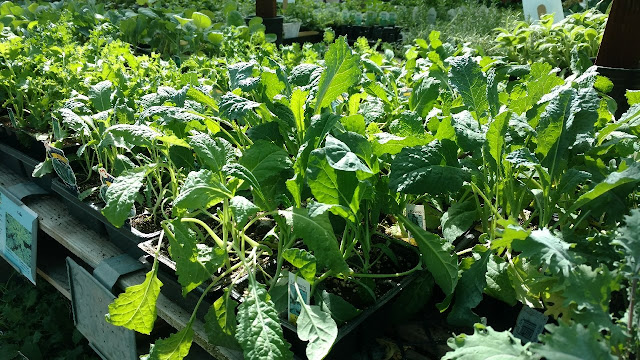

|
|
Plant kale and other leafy greens now — not tomatoes. Remember to protect tender seedlings. (Photo: Debbie Arrington)
|
This is why you don’t plant tomatoes in February. It’s still winter!
Need a reminder? We’re about to get one.
According to the
National Weather Service
, Sacramento can expect frosty nights coming soon. Rain? That’s still a question mark.
But change is in the air, says the weather service, with an “unsettled weather pattern” starting Monday.
After enjoying spring-like temperatures in the high 60s and record warmth only a week ago, Sacramento will see several days in the 50s and more typical February weather. Overnight lows will plunge down into the low 30s with possibilities of frost on Wednesday and Thursday nights – especially in the foothills.
Gusty winds of 20 to 30 mph are expected Monday and, with them, the threat of winter wildfires. Brush is tinder dry. Be careful using power tools outdoors; one spark can start a blaze.
What about rain? A storm system is expected to dust the Sierra with a little fresh snow late Monday and early Tuesday. The foothills may see showers, but Sacramento’s chance of rain from that system is estimated at only 5 to 10%, say the forecasters.
If no measurable precipitation falls before Monday, Sacramento will set a record for longest dry streak during what’s supposed to be our rainy season. Sunday will tie the current record of 44 consecutive rainless days, set in 1976.
As for frost, protect any tender seedlings or frost-sensitive plants such as succulents. That includes covering new transplants with large water bottles, gallon milk jugs or other clear plastic containers. Leave an opening for plants to breathe.
Find more
frost tips here
.
This weekend, take the opportunity to deep water, especially citrus, shrubs and perennials. Camellias could really use a drink. This pre-frost irrigation will help plants cope with cold, too.
If you feel the urge to plant something, choose kale or other cool-season greens. Leave the tomatoes indoors where it’s warm for at least a few more weeks.
Comments
0 comments have been posted.Sacramento Digs Gardening to your inbox.
Food in My Back Yard Series
April 1: Don't be fooled by these garden myths
March 25: Fertilizer tips: How to 'feed' your vegetables for healthy growth
March 18: Time to give vegetable seedlings some more space
March 11: Ways to win the fight against weeds
March 4: Potatoes from the garden
Feb. 25: Plant a fruit tree now -- for later
Feb. 18: How to squeeze more food into less space
Feb. 11: When to plant? Consider staggering your transplants
Feb. 4: Starting in seed starting
Sites We Like
Garden Checklist for week of March 30
Your garden doesn’t mind April showers. Get busy now to enjoy those future flowers.
* Get ready to swing into action in the vegetable garden. As nights warm up over 50 degrees, start setting out tomato, pepper and eggplant transplants.
* From seed, plant beans, beets, cantaloupes, carrots, corn, cucumbers, melons, pumpkins, radishes and squash. (Soak beet seeds overnight in water for better germination,)
* Plant onion sets.
* In the flower garden, plant seeds for asters, cosmos, celosia, marigolds, salvia, sunflowers and zinnias.
* Transplant petunias, zinnias, geraniums and other summer bloomers.
* Plant perennials and dahlia tubers for summer bloom.
* Transplant lettuce and cabbage seedlings.
* April is the last chance to plant citrus trees such as dwarf orange, lemon and kumquat. These trees also look good in landscaping and provide fresh fruit in winter.
* Smell orange blossoms? Feed citrus trees with a low dose of balanced fertilizer (such as 10-10-10) during bloom to help set fruit. Keep an eye out for ants.
* Apply slow-release fertilizer to the lawn.